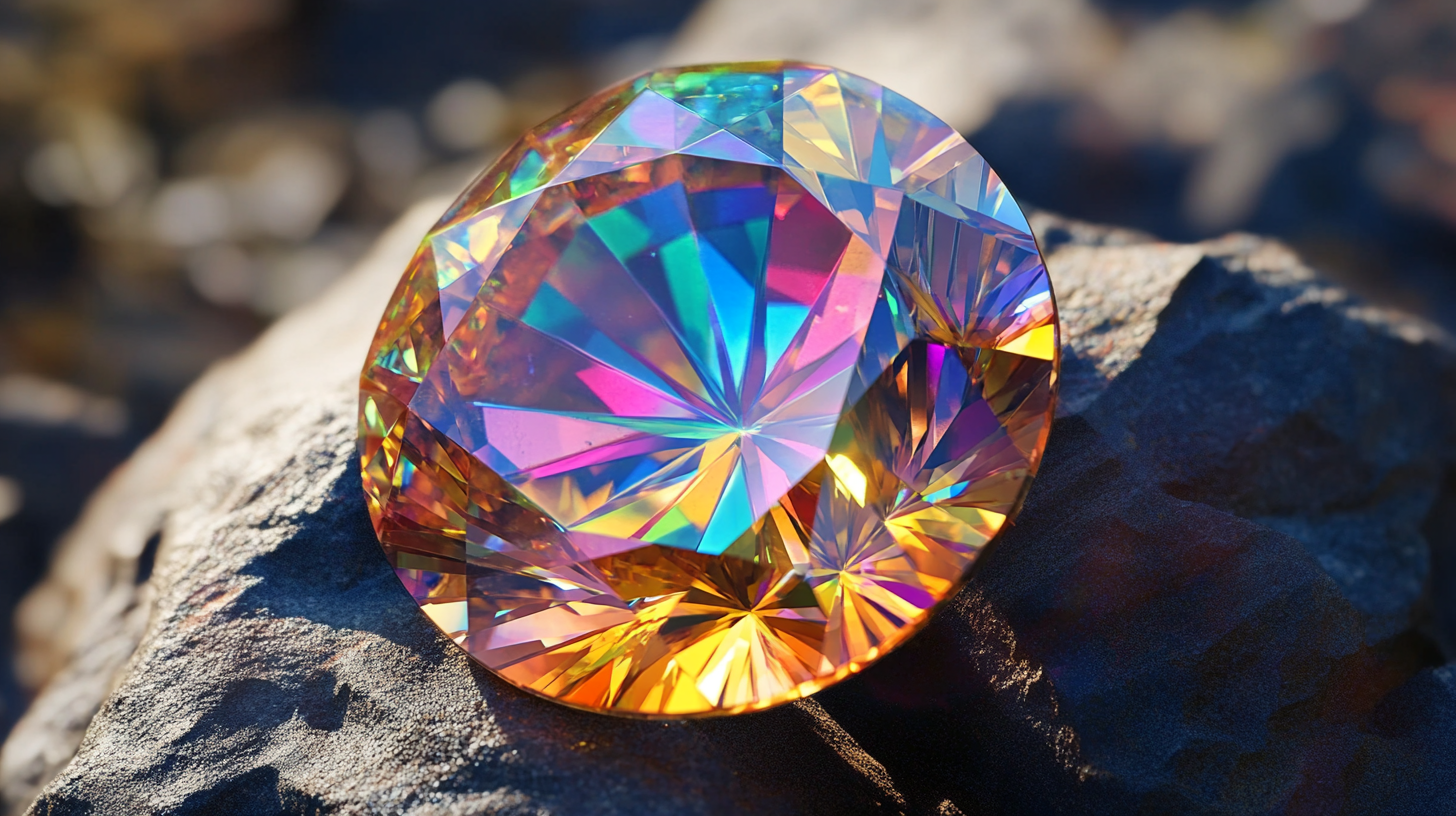
In recent years, the demand for advanced materials has surged, with industries seeking innovative solutions to enhance the performance and durability of their products. One such breakthrough technology that has garnered significant attention is Cvd Diamond Coating. This method involves the deposition of diamond films using chemical vapor deposition, resulting in coatings that possess superior hardness, chemical resistance, and thermal conductivity compared to traditional materials. As global buyers explore options to elevate their product offerings, understanding the advantages of Cvd Diamond Coating becomes essential.
The benefits of Cvd Diamond Coating extend across various sectors, including aerospace, automotive, tool manufacturing, and electronics. These coatings not only improve surface properties but also contribute to longer product lifespans and reduced maintenance costs. By leveraging the unique characteristics of diamond, companies can achieve unparalleled performance levels in applications that demand resilience and efficiency. This blog will delve into the many advantages of Cvd Diamond Coating, providing insights for global buyers looking to invest in this cutting-edge technology.

CVD (Chemical Vapor Deposition) diamond coating is transforming various industries by providing exceptional durability and performance benefits. One of the most significant advantages of CVD diamond coating is its unparalleled hardness. Compared to traditional materials, CVD diamond boasts a hardness level approaching that of natural diamond, making it ideal for use in cutting tools, wear-resistant components, and protective coatings. This increased hardness translates to extended lifespan for tools and machines, thereby reducing costs associated with replacements and maintenance.
Another critical benefit of CVD diamond coating is its excellent thermal conductivity. This property makes it suitable for applications in electronics where heat management is crucial. By efficiently dissipating heat, CVD diamond coatings help to enhance the performance of electronic components, leading to improved efficiency and reliability in devices. Manufacturers in sectors such as aerospace, manufacturing, and microelectronics are increasingly adopting CVD diamond coatings to ensure their products maintain high performance over extended periods.
Furthermore, CVD diamond coatings offer superior chemical resistance, making them ideal for harsh environments. Whether it’s exposure to corrosive substances or extreme temperatures, these coatings maintain their integrity, protecting the underlying material from degradation. As global buyers seek solutions that provide long-lasting performance and reliability, CVD diamond coatings stand out as a practical choice, meeting the demands of modern industry while contributing to sustainability through reduced waste and resource consumption.

CVD (Chemical Vapor Deposition) diamond coating has emerged as a formidable choice for various industries aiming to enhance the performance and longevity of their products. One of the most significant advantages of CVD diamond coating is its cost-effectiveness. Though the initial investment may seem substantial, the long-term savings it offers can dramatically outweigh the upfront costs. This durability translates into reduced maintenance and replacement expenses, allowing companies to allocate resources more efficiently.
In industries such as aerospace, automotive, and manufacturing, the ability of CVD diamond coatings to provide superior wear resistance and thermal conductivity is invaluable. For manufacturers, using tools coated with CVD diamond can lead to extended tool life, resulting in less frequent replacements and decreased downtime in production. This efficiency not only enhances productivity but also has a positive impact on the overall bottom line.
Moreover, the environmental implications of CVD diamond coatings further enhance their cost-effectiveness. The longevity of coated materials means that fewer resources are consumed over time, leading to a decrease in waste and a smaller carbon footprint. As companies increasingly prioritize sustainability, CVD diamond coating presents itself as an economically and environmentally wise choice, making it a leading option for global buyers looking to invest in high-performance solutions across diverse sectors.
The pie chart below illustrates the cost-effectiveness and advantages of CVD diamond coating across different sectors, highlighting its growing adoption in the industry.
CVD (Chemical Vapor Deposition) diamond coating technology not only enhances the performance and durability of tools and components but also presents remarkable environmental advantages. As industries seek sustainable solutions, CVD diamond coatings have emerged as a game-changer by reducing waste and energy consumption. According to industry reports, the use of CVD diamond coatings can significantly extend the lifespan of cutting tools by up to 300%, leading to a reduction in material usage and waste generation.
One of the primary environmental benefits of CVD diamond coatings is their ability to minimize hazardous byproducts common in traditional manufacturing processes. Unlike conventional coatings that may involve toxic chemicals, CVD technology allows for a cleaner application, resulting in less environmental contamination. The reduced need for frequent replacement of tools and parts further contributes to sustainability, as fewer resources are consumed and less energy is required for production and disposal.
Additionally, CVD diamonds demonstrate excellent thermal conductivity and chemical resistance, allowing for more efficient operational parameters. This efficiency can translate to lower emissions and energy savings during manufacturing processes. Research indicates that implementing CVD diamond coatings can reduce energy consumption by as much as 30%, showcasing their potential to significantly impact carbon footprints in various industries. As the global market shifts toward sustainable practices, CVD diamond coatings represent a forward-thinking solution that aligns with environmentally conscious manufacturing goals.
CVD diamond coating has become a transformative technology in advanced manufacturing, offering remarkable advantages that cater to a variety of applications. One of the key benefits of this coating lies in its superior tribo-mechanical properties. Recent studies have highlighted that diamond-like carbon (DLC) coatings, especially when enhanced with nitrogen doping, exhibit significantly better wear resistance compared to traditional hard coatings. This characteristic makes CVD diamond coatings increasingly desirable for high-performance rotating tools, where durability and performance under stress are crucial.
Moreover, the market for CVD lab-grown diamonds is projected to experience substantial growth, estimated at approximately USD 13.3 billion in 2023 and expected to expand at a CAGR of 7.4% through 2032. This growth is fueled by the ongoing advancements in chemical vapor deposition technologies, which are optimizing the deposition processes to enhance the quality and performance of diamond coatings. As modern manufacturing processes demand higher metal removal rates and longevity of tools, the application of CVD diamond coatings is proving to be a game-changer in expanding cutting tool capabilities.
In precision machining, particularly when dealing with challenging materials, the introduction of diamond-coated tools has set a new benchmark. These tools demonstrate exceptional hardness and thermal resistance, allowing manufacturers to push the boundaries of productivity while maintaining the integrity of the tools. As the demand for advanced materials continues to rise, the implementation of CVD diamond coatings stands poised to revolutionize various sectors within the manufacturing industry.

The global market for CVD (Chemical Vapor Deposition) diamond coating is on the rise, with trends influencing its adoption being shaped by several interrelated factors. As industries continue to seek advanced materials that offer superior performance and longevity, CVD diamond coatings are becoming increasingly popular for their unique properties, including excellent hardness, thermal conductivity, and resistance to wear. These characteristics not only enhance product lifespan but also contribute to greater efficiency in manufacturing processes.
Market insights reveal a substantial growth trajectory for the CVD lab-grown diamonds sector, which was valued at approximately USD 13.3 billion in 2023. This market is projected to experience a compound annual growth rate (CAGR) of over 7.4% from 2024 to 2032. As businesses across various sectors, including electronics and medical devices, begin to recognize the benefits of CVD diamond applications, the demand for these coatings is expected to increase, aligning with the broader trends within the nanocrystal packaging and hard coatings markets.
Moreover, the hard coatings market itself is projected to grow significantly, with an estimated value reaching USD 1,062.9 million in 2023. This growth is indicative of an ongoing shift where industries are investing in advanced materials like CVD diamond coatings to enhance functionality. As global buyers seek innovative solutions that improve product performance while maintaining cost-effectiveness, CVD diamond coatings stand out as a promising option that can meet these evolving market demands.
| Advantage | Description | Market Influence |
|---|---|---|
| High Hardness | CVD diamond coatings provide exceptional hardness, making them ideal for cutting tools and abrasive applications. | Increasing demand for durable tools in manufacturing sectors. |
| Chemical Resistance | These coatings resist chemical attack, extending the life of components in challenging environments. | Growth in industries such as pharmaceuticals and chemicals. |
| Thermal Conductivity | CVD diamond has high thermal conductivity, making it valuable for heat sinks and electronic applications. | Rising demand in the electronics and telecommunications sectors. |
| Low Friction | CVD diamond coatings reduce friction, enhancing efficiency in mechanical systems. | Increasing focus on energy efficiency in industrial applications. |
| Versatility | These coatings can be applied to a variety of substrates, making them suitable for multiple applications. | Growing adoption in diverse industries, from aerospace to medical devices. |





